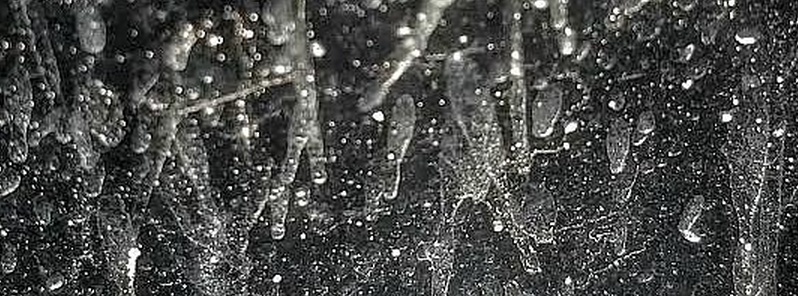Nevada dust storm primary suspect for unusual “milky rain” phenomenon in northwestern US

Large Nevada dust storm, which occurred Thursday night into Friday, is the primary suspect for unusual milky white and gray rain that started falling on parts of northwestern US late last week.
National Weather Service began reporting this unusual phenomenon on Friday, February 6, 2015. At least a dozen towns in the Northwest confirmed the presence of thick milky white and gray rain.
"Dirty" rains fell at our office & across much of Spokane. We are looking into source of this phenomena. #wawx pic.twitter.com/akad4Am3M2
— NWS Spokane (@NWSSpokane) February 6, 2015
Here's a closeup of the "dirty" rain at our office. #wawx pic.twitter.com/alG85QatHB
— NWS Spokane (@NWSSpokane) February 6, 2015
Rainwater collected from our rain gauge today. Rather murky. Still not sure why. #wawx #cloudyrain pic.twitter.com/bp225Mfv50
— NWS Spokane (@NWSSpokane) February 6, 2015
It is not unusual to experience "muddy rain" in the Inland Northwest, writes the Inland Northwest Weather Blog. "During the summer months, dirty brown water marks are frequently deposited on our cars. However, muddy rains rarely occur in the winter. And why the unusual milky white color?"
On Thursday night into Friday, numerous reports of blowing dust and winds gusting in excess of 60 mph (96 km/h) came from Washoe, Humboldt, Pershing, Churchill, and Lyon counties which are generally sparsely populated counties experiencing a multi-year drought.
"Check out some of the pictures from the Reno Gazette-Journal posted in a Saturday story about the storm that pounded the Sierra Mountains with snow and produced strong winds in western Nevada. Note the milky white or grey color of the blowing dust," Inland Northwest Weather Blog wrote.
- See their detailed analysis here.
Other possible causes include several volcanic eruptions, from South America to Russia's Far East, and ash from burn scars in the Western US.
The mystery, however, won’t be solved until scientists finish chemical analysis of the rainfall.
Featured image credit: NWS Spokane

Commenting rules and guidelines
We value the thoughts and opinions of our readers and welcome healthy discussions on our website. In order to maintain a respectful and positive community, we ask that all commenters follow these rules:
We reserve the right to remove any comments that violate these rules. By commenting on our website, you agree to abide by these guidelines. Thank you for helping to create a positive and welcoming environment for all.